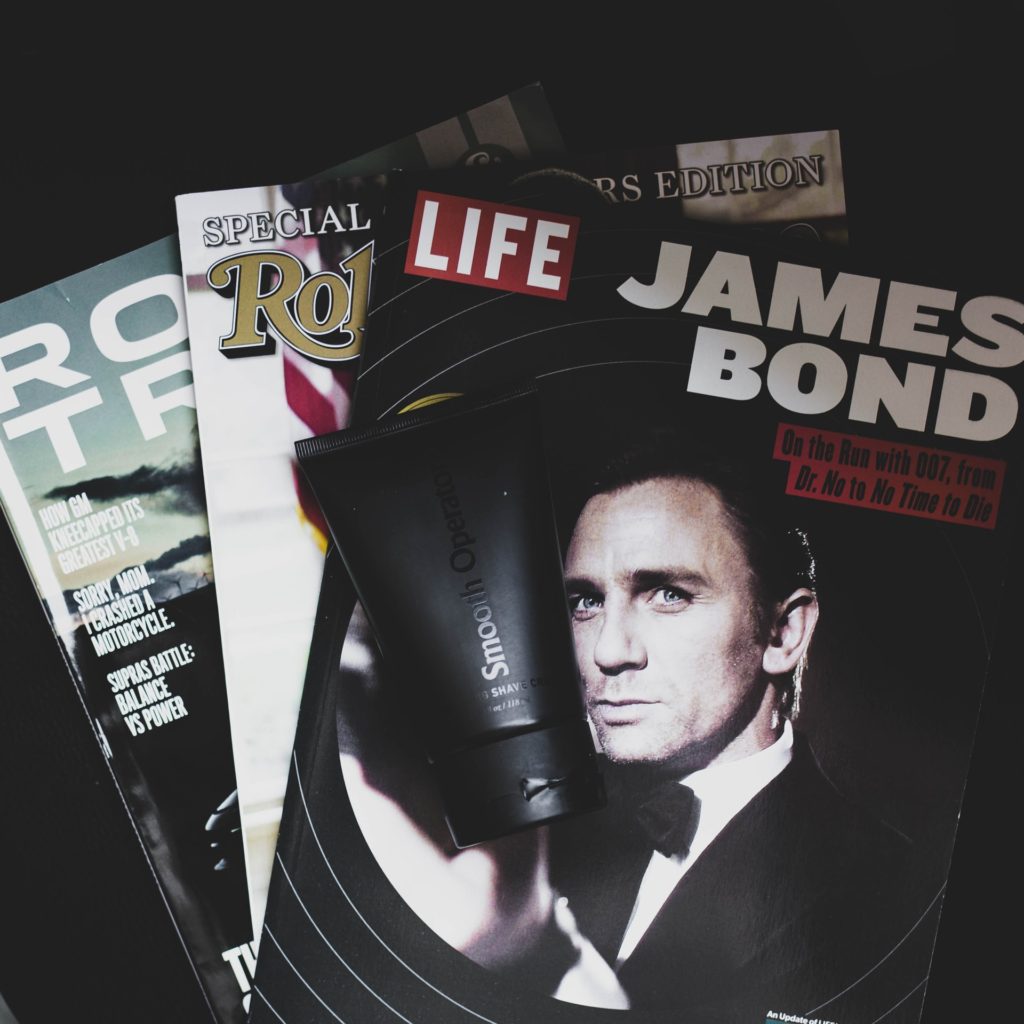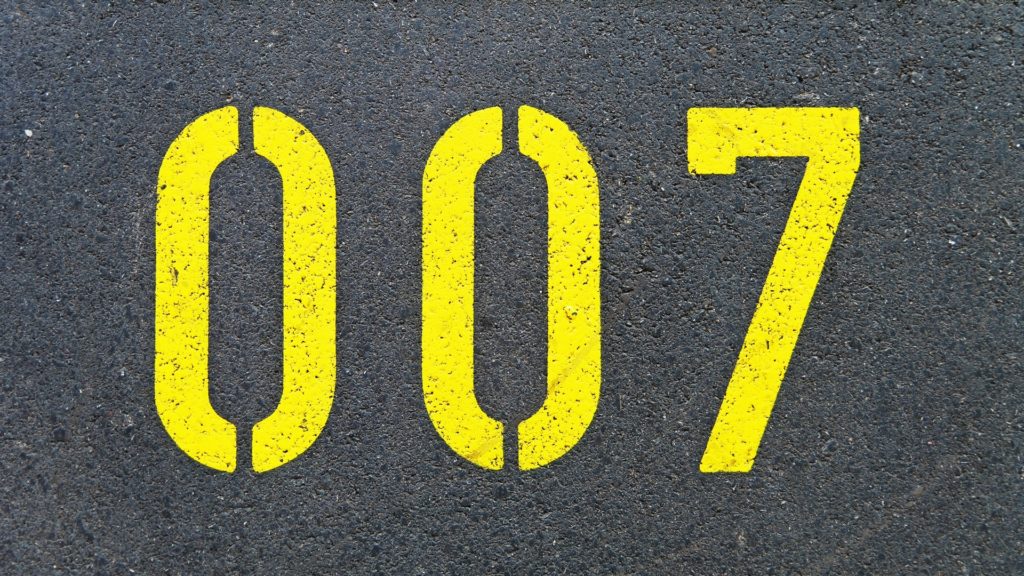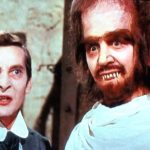Overall (TL;DR)
I was nervous about No Time to Die. Some of the reactions and reviews of the film have been hysterical, accusing it of unforgivable ‘woke-washing’ of an iconic character, of terrible liberties being taken, sacred cows being cut from crotch to crown by lasers. Then, just before the curtain went up, I learned it had a near three-hour running time, which induced a sulky rant. Three-frigging-hours? For an action movie? Seriously?!
Well, this is more than just an action movie. And there is no need for hysteria.
Daniel Craig’s brusque, brutal Bond would have no time for such nonsense. Instead, we have the perfect closure to his tenure and one of only two genuinely great final movies in a lead actor’s portrayal of 007 in the franchise’s 60-year history.
I’ll divide the review into two parts. The first is as spoiler-free as possible, then I’ll dive (in a white Lotus) into spoiler territory.

Spoiler-free review
My first reaction after the credits rolled was, “…the second-best after Casino Royale.” I was wrong. Now it’s over, I feel the five Craig era Bond movies rank like this:
1. Casino Royale
2. Skyfall
3. No Time to Die
11. Quantum of Wallace, Gromit.
27. Spect-meh
Why the change of heart? Distance, and the fact that No Time to Die (NTtD) has an absolute belter of a start and end. I left the cinema on a high.
Let’s dispense with negatives first.
The villain is pants. No offence to Rami Malek, his acting is fine. Unfortunately, the material he had to work with seemed unfinished.
His mute, menacing introduction is stellar, a real standout scene in the franchise, never mind the film, but the script does not capitalise on it. They give him the same status as the great overblown bad guys of the past like a Stromberg (The Spy Who Loved Me) or Drax (Moonraker), but those two oft-parodied, gleeful megalomaniacs had clear plans and some warped justification for it. Unfortunately for Malek, he’s immediately forgettable when compared to Javier Bardem in Skyfall or Mads Mikkelsen in Casino Royale.
This problem with characterisation is a common thread. Lashana Lynch’s character (called Nomi, but I don’t recall a shout-out of that during the film) is similarly underwritten. She gets some good bantz and witty chemistry with Bond, but there is an implied weight of expectation placed on the character that isn’t paid off and leaves her open for some of the louder negative voices I mentioned to exploit. People could unfairly dismiss her as a cypher, a placeholder.
Lea Seydoux has more to do this time and does it well. One of the many weaknesses of Spectre was that it never established why Bond was so smitten with her. Unlike Diana Rigg’s Tracy in OHMSS or Eva Green’s Vesper in Casino Royale, we never saw her get under Bond’s skin. Instead, when he walked away with her at the climax, it just felt like, “you’ll do. Get your coat.” It is better this time, yet the midpoint emotional journey still doesn’t fly until the addition of another character, at which point things become more engaging. That said, the greatest Bond girl of Craig’s time remains Judi Dench.
Ironically, the best written and best-acted character (after Bond), has the least screen time. Ana de Armas is excellent in everything I’ve seen her in so far and once again here, making you wish for much more of her. It’s quietly the most revelatory and modern of the film’s gambits, too.
There was some story slump and some things which didn’t seem entirely clear (I’ll be rewatching, so maybe that will explain it.) I’d still argue that the film could have comfortably shed 20 or so minutes.
The only other criticism I have is minor and maybe more to do with the venue than the film itself, so I’d welcome your comments once you’ve seen it. Did you find the picture dark? It may have been the projector, but it seemed to lack brightness. Most of the film seemed to be shot at the magic hour (the time just before sunset or after sunrise favoured by photographers and cinematographers) and there seemed to be limited artificial light. It was beautiful, just a little dark.
The score is superb, with Hans Zimmer on composition duties aided by Johnny Marr and with a great title track by Billie Eilish. Frankly though, after the utter dog-turd that was Sam Smith’s Spectre song, nothing could have been worse. Me on Ukulele maybe? Or Timmy Mallet singing about Ursula Andress’ bikini? Worst. Bond Theme. Ever. EVER. Honestly, I’d sooner sit through all the Michael Bay Transformers movies than ever listen to that bloody awful song again.
There’s a ton of Easter eggs for the fans and the action scenes are top-notch, including, as you might expect from the director of True Detective, a fantastic single-take sequence. Most of the action feels grounded, real, and well within the capabilities of Craig, who still looks convincing as the (very well dressed) rough man who stands ready to visit grievous harm upon our enemies.
He’s superb in this. And he’s been superb throughout his films, even when the film around him didn’t work as well as he did. Not everyone has enjoyed his tenure. I’ve read many comments longing for a return to ‘fun’ movies and moving away from the continuing story elements. Well, fair enough (although there have been plenty of great gags in his time), but the greatest stories for me are the ones that reveal and explore character. That’s been done to a far greater extent in these five movies than ever before in this franchise and it’s done superbly here.
In summary, No Time to Die is not a perfect film, it’s not a perfect Bond film. But it does a fantastic job of uniting classic and modern Bond, of reminding us of the vulnerable man in the books, who was never weaker than when, as in one memorable line from the novel The Spy Who Loved Me, he had two hearts.
It’s the best sign-off a Bond actor has had and reminds us once again why we love Bond, despite his many, many imperfections.

SPOILERS (Do you expect me to talk? Well, I will, a lot, and I’m going to spoil the shit out of it from hereon, so back off now if you don’t want to know…)
Right, I’ll get to that ending in a minute, but first…
Loved, loved, loved Safin’s base. Knowing the novels, the mention of the poison island in the build-up to the finale had me leaping about in my seat like my nine-year-old self seeing my first ever Bond movie at the cinema (Octopussy). And it was a great finale on an impressive set. While there was nothing quite as good as the legendary set designer Ken Adam would have built in his heyday, they were clearly swinging for it, and it was great to have that element of classic Bond.
There were definite signs of rewriting and un-knitted plot threads. The introduction finished on such a strong note of drama with Bond coldly abandoning Madeleine that it felt unconvincing when they got back together again. For someone who’s supposed to have such ingrained trust issues after Vesper, he got over it quickly, especially considering her initial denial that Mathilde is his daughter.
Similarly, we’re left assuming that Mathilde talking about the ‘mosquito bites with friends’ during the car chase is somehow setting something up for the future, as it went nowhere here. Overall, the female characters seemed, as usual in a Bond movie, to shoulder the weakest writing. Only de Armas’ character came off well, as an agent Bond respects, rather than immediately tries to bang.
That said, it was great to finally have extended scenes of two double-ohs fighting together after 25 films.
Now, that ending. Calm down.
Bond has died on screen before, as far back as From Russia with Love, the second film, and again, at the start of You Only Live Twice, which for anyone familiar with the novels is where this gets interesting.
For my money, the three-novel sequence of OHMSS, You Only Live Twice and The Man with the Golden Gun is the peak of the Bond books (although Golden Gun, after a great start, is disappointing. Fleming didn’t like it himself). After Tracy is murdered at the close of OHMSS, Bond is a man possessed. Giving that kind of vengeful motivation to a man with his skills is an act of spectacular stupidity on Blofeld’s part. We’ve rarely seen that kind of off-the-chain ferocity in the screen Bond: Licence to Kill, and Quantum of Phallus, where the disturbed, alcoholic Bond most closely resembles his mindset in the novel. This is not a man you want to be after you for vengeance. He makes Liam Neeson in Taken look like David Brent.
Anyway, the You Only Live Twice novel sees Bond on a bloody crusade to wipe Blofeld from the face of the Earth, which takes him to … the poisoned garden, also off the coast of Japan, just as described in NTtD. While there, a typically villainous contrivance sees the world believe him dead. In fact, he loses his memory. He also fathers a child.
That brings us to the opening of The Man with the Golden Gun, where our hero, having been turned, tries to kill M. In the book, M sends Bond to kill Scaramanga, brutally declaring that only the real Bond would stand a chance against the hitman.
NTtD sows the seeds for this story arc when Safin points out the plant that he says he can use to control people. The ‘eternal’ poison in Bond’s system would kill Madeline and his daughter. He can never touch them again. Surely then, the kindest thing he can do for them is to appear to die like the hero he is, even if he had a chance of surviving?
It certainly appears that both Madeline and his MI6 colleagues believe him to be dead, and yet ‘James Bond Will Return.’
There’s no guarantee the writers of Bond 26 will use these story hooks, but they’re there if they want them. There’s even confusion over his identity at the start of The Man with the Golden Gun, and although that would be less believable in an age of DNA testing, they could use this to explain a new actor.
Regardless, the death of the character could be 100% real and still not matter. All the future movies could be set at a point in time before this, or they could adopt an anthology approach.
I understand why many are upset, especially since the film specifically references earlier versions of Bond with the portraits of earlier M’s, thereby implying that this represents the death of ‘all’ Bonds. But we accept the MCU, where death is as meaningless as Boris Johnson’s promises. Bond is a superhero in all but name. Take another look at the films before Craig’s stint. One of the review/reaction videos on YouTube was simultaneously outraged at Bond’s death and bemoaning the recent lack of brainless action in the franchise. Well, I’m sorry, but those things go together in superhero films like hangovers and fried breakfasts. And even in the Craig era, the films they most closely mirror are the Dark Knight trilogy; Casino Royale was a direct response to Batman Begins – the two best movie character reboots; Silva mirrored the Joker; Batman appeared to die at the end of The Dark Knight Rises.
Heroes who fight for their country (or the world, in this case) are people who aren’t afraid to die. NTtD is about consequences. It’s the logical culmination of the character. You can neither shag around for as long as he did nor continually risk your life for Queen and country without the ultimate consequences – and meaning – that this film provides.
Finally, when you compare this to the limping catastrophes of A View to a Kill and Die Another Day, it’s hard to argue either for a better send-off or against Craig’s evolution of the character. By ending on such a controversial note, they have made the character relevant again.
James Bond will return.



